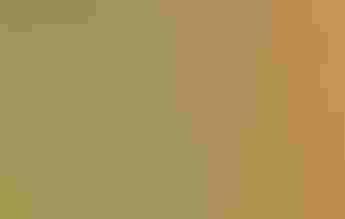
La página que intenta visitar sólo está disponible en inglés. ¡Disculpa!
The page you are about to visit is currently only available in English. Sorry!

The preparations began weeks before the big day. Staff at South Carolina’s Governor’s Mansion tidied old plant beds, ground up left behind tree stumps, and removed tangles of ivy, readying the mansion's gardens for their impending transformation. The result of the staff's hard work paid off last week, when members of Audubon South Carolina and other volunteers arrived Tuesday morning with one goal: to fill the space with native plants, local down to the county.
Whether trees, shrubs, or flowers, native plants provide the best possible habitat for birds and pollinators. Raising awareness about native plants and encouraging more people to plant local is one of Audubon South Carolina's key initiatives this year. So far, the group's efforts have brought together more than 5,000 members of area garden clubs and the South Carolina Native Plants Society. Now, the Governor McMaster is on board, too.
“Of all the new things that we're doing—the native plants, bird-friendly communities—it’s a tremendous unifier across the state,” says Sharon Richardson, the director of Audubon South Carolina.
The Governor's Mansion—a stark-white, Federal-style house dating back to the mid-19th century—sits in what is now a rare patch of greenery in the middle of downtown Columbia, surrounded by two other historic buildings. The gardens, which began in the early 1800s, are open to the public and serve as a popular place for peaceful strolls and wedding photography.
Richardson says she first discussed the garden idea with the Governor at an event they both attended. Audubon had recently helped pass a state resolution to make the third week of every October Native Plants Week in South Carolina, and when the topic came up, McMaster immediately recognized the potential for the garden to serve as a native plant—and bird—haven.
“His face lit up, and he said, ‘I want native plants at the mansion—how do I do that,’” Richardson says. “He was so excited with the whole concept about why birds need them. He was definitely gung ho.”
Audubon South Carolina then worked with the Governor’s staff to come up with a plan. In the end, they decided to start by replacing the plants in three large beds with natives only. Erin Stevens, a landscape architect who specialized in native plants, also pitched in, selecting species that would uphold the formal tone of the existing gardens while still supporting birds and other pollinators.
“We want it to be a year-round fruitful garden,” says Jennifer Tyrrell, the bird-friendly coordinator for Audubon South Carolina and Stevens's co-planner. In summer, purple flowers from the phlox and white flowers from Virginia sweetspire will attract hummingbirds and bees. Meanwhile, leaves from plants such as Cherokee sedge provide meals for insects, which Tyrrell prefers to think of as "free bird food." From fall until early spring, berries from flowering dogwood trees and inkberry bushes will provide meals for birds migrating up the Atlantic Flyway.
Overall, the volunteers planted 500 native plants. The funding for the project came from a grant through Audubon’s Coleman and Susan Burke Center for Native Plants. This spring, the Burke Center has spread $140,000 across 35 native plant projects in 21 states. According to Tyrrell, Audubon South Carolina hopes to continue the project throughout the rest of the property. The mansion's staff also seemed keen on the idea.
According to Nancy Bunch, the curator of the Governor’s Mansion and grounds, the recent work fits in well with the garden’s history. It was often overseen by first ladies, who made improvements and kept the gardens welcoming. Two of them in particular, Ann “Tunky” Riley and Jenny Sanford, took great pride in the appearance of the gardens, and their families were invited back to see the changes. Though Ms. Riley died in 2008, her family toured the grounds in her honor.
“[Riley and Sanford] tried to enhance the gardens’ beauty and would have definitely been appreciative of Audubon’s interest—as would have the older owners,” Bunch says. “They would have been so proud of the way that they look now.”
The completed gardens will be officially unveiled on April 24 at a ceremony where three special bird houses, fashioned after the historic buildings on the property, will also be put up. The hope is that they and the new native plants will attract more birds to the yard. According to Tyrrell, though, the mansion is already home to plenty. “When we were planting, there was an Ovenbird, and a robin singing, and towhees,” she says. “There's already birds there, and we're just helping them.”
***
Audubon is a nonprofit dedicated to saving birds and the places they need. To support our conservation work, please make a donation today.